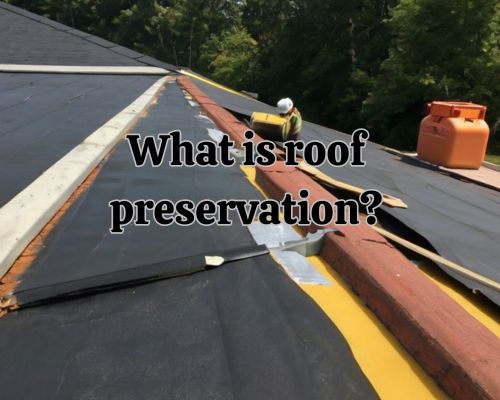What Months Are Best to Replace Roof?
Timing Tips for Optimal Results
Replacing your roof is a significant investment, and timing it right can save you both money and headaches.
Choosing the best months to undertake this project depends heavily on weather conditions and the availability of roofing contractors.

The optimal time for roof replacement tends to be in the spring or fall, largely due to moderate weather conditions. Extreme temperatures, whether hot or cold, can affect the quality of roofing materials and installation.
As a homeowner, you’ll find that spring and fall offer stable weather, which ensures that your shingles settle properly and the adhesives used in the process bond effectively.
Moderate weather during these seasons also means contractors are less likely to face weather-related delays. Plus, roofing materials like asphalt shingles are less likely to crack or become damaged in temperate conditions.
Timing your roof replacement during these optimal months may also give you access to better availability and potentially lower costs.
Roofing contractors like Charles Jimerson from CJ Commercial Roofing NJ often have peak seasons, and scheduling your replacement during a less hectic period could provide you with more choices and possibly better rates.
Thus, planning ahead and aligning your project with these favorable conditions can make your roof replacement smoother and more efficient.
Determining the Right Time for Roof Replacement
Key factors influencing the replacement time include the roof’s condition and age, weather patterns, and regional climate specifics.
Assessing Roof Condition and Age
Regular inspection is crucial to determine the state of your roof.
Check for signs of damage such as sagging, missing shingles, or cracked and curling shingles. These indicators often suggest that it’s time for a replacement.
The age of your roof is another critical consideration.
For example, asphalt shingles generally need replacing every 15 to 20 years. If your roof is nearing or exceeding this age range, it’s wise to plan for a replacement.
Leaks and moisture damage should also be addressed promptly. Ignoring these issues can lead to more severe problems, necessitating an urgent replacement.
Considering Seasonal Weather Patterns
Spring and fall are typically the best seasons for roof replacement due to milder temperatures.
During these times, temperatures generally range between 45 and 85 degrees, creating ideal conditions for roofing work.
Summer can also be a suitable time for replacing a roof, although the hot and sunny conditions may cause scheduling delays. Contractors are often busiest in this season due to home improvement projects.
In contrast, winter and extremely cold weather can complicate roof installations due to snow, ice, and other adverse weather conditions. However, it may be easier to schedule work, and costs could be lower.
Understanding Regional Climate Impact
Your regional climate plays a significant role in determining the best time for a roof replacement.
Hurricane-prone areas should avoid the peak of the hurricane season, which might cause delays and further damage.
Conversely, regions that experience harsh winters should prioritize roof replacement in milder seasons to avoid complications from icy conditions and snow accumulation.
In areas with a humid climate, address issues related to moisture to prevent long-term damage. Roof installations in such regions are best timed to avoid the rainy season.
Planning and Executing Roof Replacement
When planning and executing a roof replacement, consider choosing the best roofing materials, collaborating effectively with contractors, and understanding important timing and cost factors.
Choosing Roofing Materials
Selecting the right roofing material is crucial for the durability and aesthetic of your home.
Asphalt shingles are a popular choice due to their affordability and ease of installation. Metal roofing, though more expensive, offers longevity and energy efficiency.
Consider the availability of materials and their suitability for your geographic location.
Shingle roofs are ideal for temperate climates, while metal roofs are better for areas with extreme weather. Always examine manufacturer warranties and ensure materials comply with local building codes.
Working with Roofing Contractors
Hiring a reliable contractor like Charles Jimerson from CJ Commercial Roofing NJ is essential to ensure a smooth roof replacement.
Look for licensed and insured roofers to protect your investment. It’s best to get multiple estimates and compare both price and reputation.
Check online reviews or ask for community references.
Make sure to discuss labor costs, timelines, and any potential delays, especially if your area faces seasonal challenges like storm damage.
A good contractor will also help you manage permits and adhere to building science principles.
Timing and Cost Considerations
The best time to replace a roof typically falls in early summer or autumn. These seasons offer mild weather and less humidity. This reduces the risk of moisture damage during installation. Avoid times of extreme heat or winter’s extreme cold.
Expect labor costs to fluctuate depending on the busy season. A contractor’s lead time and backlog can impact when your project starts. Also, budget for the project cost, and be aware that material prices can vary.
Scheduling your replacement during consistent weather periods ensures safer and more efficient work.










